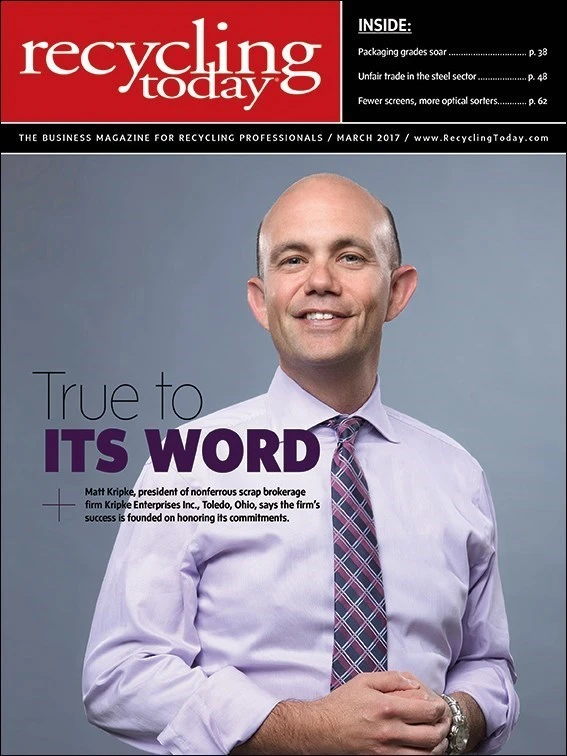
Eighteenth century British author Henry Fielding is credited with saying, “Success is a fruit of slow growth.” In a culture often fixated on instant gratification and impressive quarterly financial returns, this saying seems to have faded into the background.
In the recycling sector, when a company grows quickly or a processing technology makes an instant change in how materials are handled, it is our job to report on it, and ideally, you’ll read about in our magazines and e-newsletters and on our websites.
A task that is equally important to us as a media group is to identify and comment on trends and emerging techniques that are slowly building and to catalog those changes that are happening in a far less perceptible manner.
The plastics recycling sector in the past 20 years has entailed a sequence of events that includes some of the former—big-ticket investments or announcements—as well as a slower, overall trend toward sustained growth.
It seems well understood that recycling plastic can entail additional complications compared with recycling metal or paper. While plenty of metals and alloys “don’t get along with each other,” the nearly infinite number of polymers, colors and layering techniques of plastic present a quantum leap in variety.
Despite these complications, the amount of plastic being collected and recycled increases each year. The drivers for this increase are numerous, but a growing one is unease within the plastic industry itself that when its products go unrecycled, they can be highly visible and end up in unwelcome places.
In early 2017 alone, two of the world’s largest consumer products companies and several international organizations have made high-profile announcements concerning pledges and investments pertaining to plastic recycling.
If history is any indication, not all these efforts will pan out. Consumer products firms and policymakers alike have made poor investments and unmet promises when it comes to the complicated task of recycling plastic properly and cost-effectively.
However, the overall trend is hard to deny, and as a media group we find ourselves paying more attention to this growing sector.
If you have not already done so, please be sure to stay in touch with this sector in our three-times-per-year Plastics Recycling magazine, produced in partnership with Plastics Machinery Magazine. It is being issued in February, June and October in 2017. (This content also can be found on our website.) Complicated though it may be, the sector also is poised to present opportunities for all recyclers.
Correction: The article “Preparing for Install” in the February issue incorrectly stated that Sweden-based Presona had left the U.S. market. Presona has been represented in the U.S. market since March 2016 by Stadler America, Colfax, North Carolina. We apologize for the error.Get curated news on YOUR industry.
Enter your email to receive our newsletters.

Explore the March 2017 Issue
Check out more from this issue and find your next story to read.
Latest from Recycling Today
- ReMA opposes European efforts seeking export restrictions for recyclables
- Fresh Perspective: Raj Bagaria
- Saica announces plans for second US site
- Update: Novelis produces first aluminum coil made fully from recycled end-of-life automotive scrap
- Aimplas doubles online course offerings
- Radius to be acquired by Toyota subsidiary
- Algoma EAF to start in April
- Erema sees strong demand for high-volume PET systems






